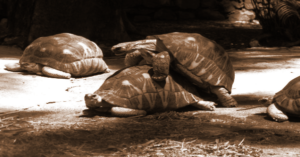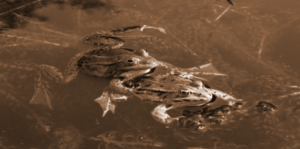
Courses

By Shailendra Singh
|
Updated on 5 Dec 2024, 11:09 IST
Reproduction in Organism: Reproduction is the biological process in which organisms produce their type of offspring. Reproduction is an important part of the life cycle possessed by an organism. In other words, reproduction is a biological process wherein younger ones produced are identical to their parents. This phenomenon is significant in the continuity of the species, generation after generation. This process is necessary to maintain the continuity of species on the earth. Reproduction also helps in increasing the population and as a result, sustains a balance in the ecosystem amongst different biotic components precisely. Without reproduction, the life that is thriving now would cease. Reproduction also facilitates evolution due to variations arising from the process of reproduction through the intermingling of species.
There are two modes of Reproduction depending upon the participation of one or both parents:
Reproduction in Organism: a) Asexual Reproduction b) Sexual Reproduction

Fig:- Reproduction process in tortoise

Fig:- Reproduction process in Frog

Also Check: Identification of Primary Alcohol
The mode of reproduction in which a single organism is capable to produce its own type of offspring is known as asexual reproduction.
c. Tuber:- eg- Potato, etc.
d. Offset:- eg- Water hyacinth(also known as the terror of Bengal), etc.
By leaf:- eg- Bryophyllum, Begonia, etc.
The mode of reproduction in which two individuals are involved to produce young ones is known as sexual reproduction.

Senescent phase:- The old period of the organism is known as the senescent phase.
Reproduction In Plants
Reproduction in human beings involves the fusion of male and female gametes produced in their reproductive system. The male reproductive system is different from the female reproductive system, both in structure and in function. Human reproduction consists of the following steps:-
III. Fertilization
Also Check: Algae -Important Topic Of Biology NEET 2025
Post-fertilization:- The event after fertilization is called post-fertilization. It includes zygote development and embryogenesis.
Question. Difference between Asexual and sexual reproduction?
Answer: Sexual Reproduction:- In this mode of reproduction, a new offspring is produced by the participation of two parents of the opposite sex. This type of reproduction is seen in all multicellular organisms including birds, reptiles, dogs, cats, cattle, elephants, etc. The complete process of sexual reproduction consists of a set of events, including:
Asexual Reproduction:- In this mode of reproduction, a new offspring is produced by the involvement or participation of single parents only. The produced offsprings are not only identical but are also the exact copies of their parent because in this process a single parent divides itself to reproduce its offspring.
Question. What is the importance of vegetative reproduction or vegetative propagation?
Answer: The importance of vegetative reproduction is followed below:-
Question. The period from birth to natural death is called _______________?
a. Vegetative phase
b. Life span
c. Reproductive phase
d. Binary fission.
Answer:Correct answer is option b.
a. Vegetative phase:- The growth period of a plant is called the vegetative phase.
b. Life span:- The period from birth to natural death of an organism is called its life span. Different species have different periods. Eg. Crow- 15years, Elephants- 80years, Tortoise- 100-150years, etc.
c. Reproductive phase:- The reproductive period of an organism is known as the reproductive phase. It starts at the end of the growth period of the organism.
d. Binary fission:- It is a simple and common method of asexual reproduction. In this method, a single-cell organism is divided into two daughter cells. Then each cell grows into a new individual. In binary fission first nucleus divides then the cell divides. Example:- Amoeba, Paramoecium, Euglena, etc.
The biological process through which organism produce their type of offspring to maintain their continuity on the earth and proceed with the generation as new individuals.